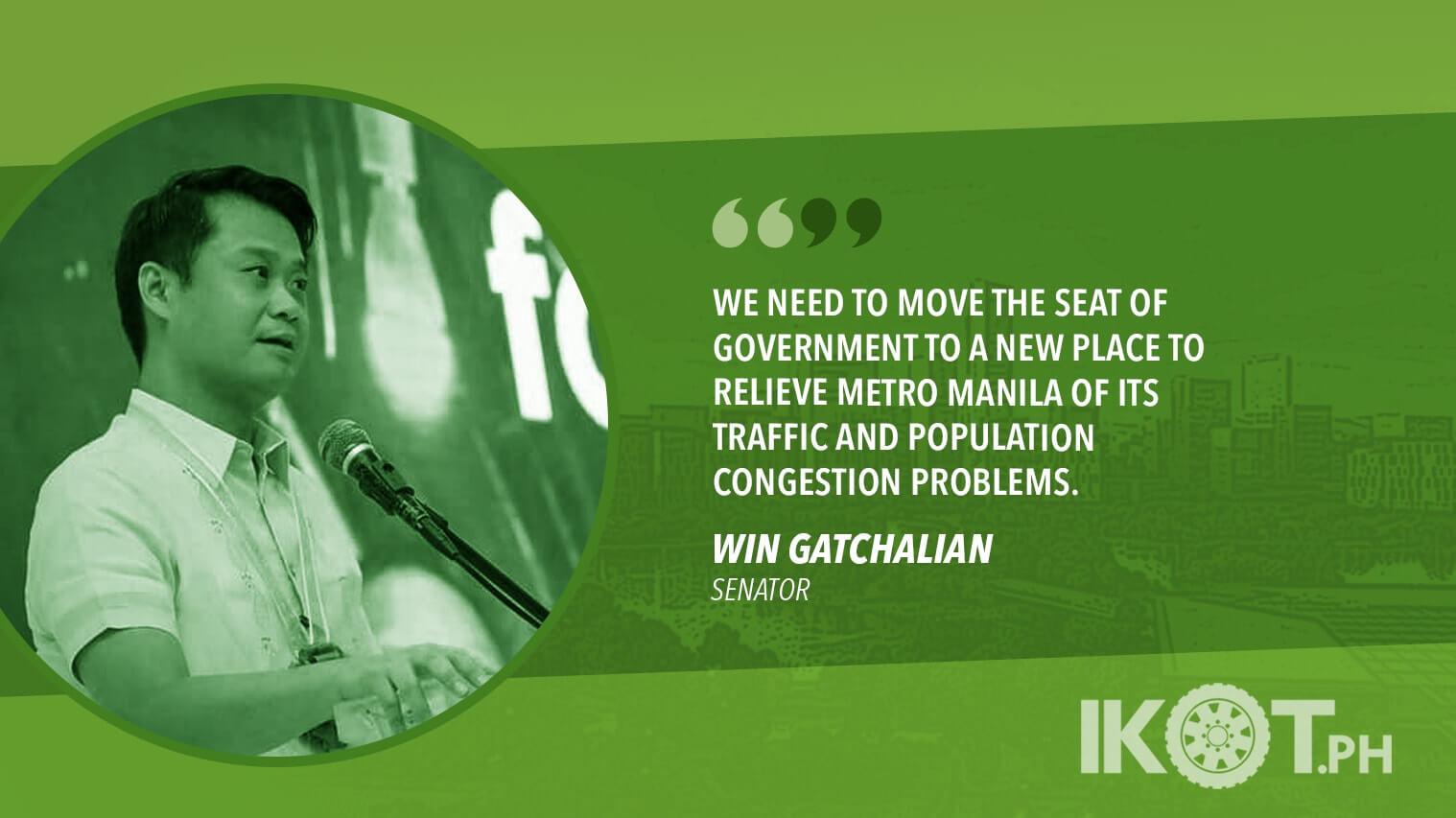In a bid to decongest Metro Manila, Senator Win Gatchalian has filed a bill seeking to transfer the seat of the national government to New Clark City in Tarlac by 2030.
“With our economy growing at 6% on the average and the rise of middle-income families who have the capacity to buy new vehicles, we need to move the seat of government to a new place to relieve Metro Manila of its traffic and population congestion problems,” Gatchalian said in filing Senate Bill No. 876.
“Moving the permanent seat of government is not something new and has been done in several countries.”
The legislator pointed out that moving the permanent seat of government is not something new, and has been done in several countries including the United States, South Korea, Brazil, Kazakhstan, and Malaysia, which moved its administrative capital from Kuala Lumpur to the city of Putrajaya in 1999.
“In the case of the Philippines, the solution lies outside Metro Manila: at the New Clark City located at the Clark Special Economic Zone in Capas, Tarlac,” the lawmaker said.
The senator underscored the worsening congestion in Metro Manila, noting that the National Capital Region (NCR) has a population density of 20,785 persons per square kilometer, which is much higher than that of Mumbai, Paris and Tokyo.
“Official figures from the Philippine Statistics Authority (PSA) show that the metropolis had 12.88 million residents in 2015, a figure that has been growing 1.59% annually,” he said.
“This means that Metro Manila’s population is projected to reach 13.93 million in 2020 and 14.94 million in 2025.”
“Traffic congestion in the National Capital Region resulted in losses of at least ₱2.4 billion a day.”
The lawmaker also noted that according to a study conducted by the Japan International Cooperation Agency (JICA) in 2014, traffic volume in Metro Manila has already exceeded road capacities.
“The same study also stated that the traffic congestion in the National Capital Region resulted in losses of at least ₱2.4 billion a day and could reach ₱6 billion a day if not solved,” he said.
“In its follow-up survey in 2017, JICA estimated that the Philippines loses ₱3.5 billion daily due to traffic congestion, and it is projected to lose ₱5.4 billion daily to traffic by 2035 if no interventions are made in Metro Manila,” Gatchalian added.
He said that for several years, the government has been trying to ease traffic congestion in Metro Manila by building more roads and bridges and implementing various traffic policies such as the number coding scheme, the restriction against provincial buses and the “driver-only” vehicles along EDSA.
However, these efforts are not enough to manage the daily traffic of around 15 million people within Metro Manila, Gatchalian said.
He added that beyond easing the congestion problems in Metro Manila, the transfer of the seat of government to New Clark City is also expected to spread development to other parts of the country, generate jobs for Filipinos, and help the economy achieve sustainable growth.
“The development of New Clark City is already part of President Duterte’s Build-Build-Build program, and is projected to contribute ₱1.57 trillion per year to the country’s gross domestic product upon its completion,” Gatchalian said.
“This 9,450-hectare development has already set aside 1,514 hectares for a National Government Administrative Center that will house government offices and its attached agencies. It will be the country’s first smart, disaster-resilient and sustainable city that will have a mixed use of residential, commercial, agro-industrial, educational institutions, and information technology developments,” he added.

